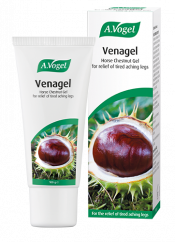Why do my feet and ankles swell during hot weather?
While swollen ankles and feet can be caused by a number of factors, such as too much salt in your diet and sitting or standing too long, being too hot is a very common cause.
This phenomenon is actually a result of your body's natural cooling mechanism. When you are too hot your veins dilate (expand), allowing fluids to leak into surrounding tissues. The widening of these blood vessels in warm weather is perfectly natural as it’s our bodies’ way of trying to keep itself cool. However, when this happens your veins struggle to pump blood back to the heart and have trouble fighting gravity, which pulls fluid down to the ankles and feet, causing it to pool, resulting in swelling and discomfort.
My tips on how to ease swollen feet and ankles in hot weather
If your swelling is being caused by heat there are many natural ways you can help cool down your lower limbs, improve poor circulation and help return fluid to your blood vessels, including:
1. Elevate your feet

If you feet and ankles are swollen, this is one of the first things you should do to help reduce the swelling. Gravity really isn’t your friend when it comes to swelling, so you need to reverse its effect on your limbs by making sure you elevate you feet as much as possible.
It is recommended to raise your legs/feet higher than your heart, 3-4 times a day for 30 minutes each – depending on the severity of the swelling. When you go to bed you can also put a pillow under your ankles to help drain the excess fluid.
2. Avoid heat as much as possible
If you are prone to swelling when it is warm, try to stay a cool as possible. Easier said than done sometimes, but one way to do this is to ensure you don’t sit in direct sunlight. Find shaded areas to sit in or seek out air conditioned rooms where possible.
Keep a mini fan handy to keep you cool and try a cooling foot spray – which can refresh and cool down hot feet and ankles quickly.
Avoid excessively hot baths, hot showers and saunas as these can worsen swelling. Try to keep your water temperature warm but not too hot, and at the end of a shower a good tip is to blast your legs with a jet of cold water to boost circulation.
3. Reduce swelling with Horse Chestnut

While Horse Chestnut (also known as Aesculus hippocastanum) may not be familiar to you, you will likely have come across the seed, more commonly known as the conker. It is the seeds that are used medicinally - the same seeds we use in the traditional game of conkers.
Aescin, the active component in horse chestnut extract, has been shown through numerous studies to contain anti-edematous, anti-inflammatory, and venotonic properties, all of which can help reduce excess fluid buildup in your tissues, that can lead to fluid retention and swelling. (1)
A Cochrane review of several studies also determined that horse chestnut seed extract is an efficacious and safe short-term treatment for Chronic Venous Insufficiency (CVI). (2) Fluid retention (puffy or swollen ankles or feet) is one of the main symptoms of CVI, as well as varicose veins, and itchy or swelling legs.
Horse Chestnut can be taken as tablets or a liquid herbal extract, but for swollen feet and ankles, I recommend using a soothing gel such as:
A.Vogel Venagel Horse Chestnut Gel
Horse chestnut extracts in gels such as Venagel are soothing, help reduce swelling and provide cooling relief to legs, ankles and feet that feel weary, heavy and uncomfortable. Plus, the act of massaging the gel in helps to stimulate blood flow!
How to use A.Vogel's Venagel Horse Chestnut Gel
Massage a small amount of the gel onto the skin 2 to 3 times a day using an upwards motion. Pay special attention to the ankles and the areas that feel most uncomfortable. Then, if possible, keep legs raised for 20 minutes.
4. Stay active
Although excessive and intense exercise or activity can contribute to swelling in the lower limbs, gentle exercise such as walking and swimming is good for you as it helps to boost your circulation and get fluid build up flowing again. A good way of ensuring you don’t over-heat and add to any swelling is to exercise at cooler times of the day, such as the morning or early evening.
Swimming is particularly good for swollen feet and ankles as it not only cools them down and keeps you off your feet, it also promotes gentle movement and stretching which helps to get fluids moving, while the water pressure can also help to improve circulation. Anything that pumps the calf muscles helps, even if you’re just treading water in the pool or simulating this movement while sitting at work.
5. Drink plenty of water

Whatever you do, don’t limit the amount of water you drink thinking this will lessen the amount of water you retain. Not drinking enough water can make the salt concentration in your blood to go up, which makes your body retain any water you do drink and cause swelling! Excess salt is a big contributor to swelling, so by drinking more water you can help to dilute the amount of salt in your system and flush it out.
Try to aim for at least 8-10 glasses of plain water a day. If you struggle to drink plain water then try adding slices of cucumber and lemon to it. This not only makes a refreshing drink, but cucumbers and lemons are also great for fighting the swell due to their anti-inflammatory properties. Tasty and powerful!
6. Watch your diet

As I have mentioned, one of the main causes of swelling is excessive salt, so you need to be mindful of how much you consume in your diet. To limit your chances of swollen ankles and feet it is best to pass on the table salt and look at a low-sodium alternative or reduced salt varieties of foods which are usually high in salt, such as soups, sauces, crisps and smoked meats. Try to avoid eating highly processed foods as these often have a high salt content.
Summer is a great time for adding more fresh fruit and vegetables into your diet and there are some that are better than others when it comes to helping your swollen feet.
Certain foods are natural diuretics, which increase and encourage urine production, and can provide relief from fluid retention. Unlike prescribed diuretics, natural ones do not strip your body of essential vitamins and minerals. Foods that have this diuretic effect include beetroot, leafy greens such as lettuce and spinach, pumpkin, green beans, asparagus, onion, lemons and pineapple.
7. Support your legs, ankles and feet
Support tights or compression socks can help prevent swelling. They may be a little difficult to get on, but their tightness is key! They provide measured pressure to reduce the size of dilated veins, increase blood flow and help to prevent the pooling of fluids in ankles and feet, which causes swelling.
8. Avoid being stationary for too long
After a long day at work, especially if you have been sitting or standing all day, it is normal to have some swelling in your legs, ankles and feet, since gravity has been at work all day.
One way to avoid this is to ensure you have regular ‘walking breaks’ to ease discomfort and get fluid moving and blood flowing upwards again. If you sit at a desk all day long, try finding a way of propping your feet up – even a slight rise can make a big difference to your swelling.
Try not to sit with your legs crossed as this can restrict blood flow and make swelling worse. It’s best to sit with your feet flat on the floor or crossed at the ankles.
Follow these tips for exercises to do at your desk if you find that you spend too long sitting down at work!
9. Massage

Massaging your feet and ankles is a good way to get fluid moving and reduce swelling. The best way to do this is by massaging gently, using both hands and working upwards from feet to knees in a circular motion. Or better yet get someone else to massage them for you, as this ensures that you don’t bend your knee and restrict flow.
Essential oils such as peppermint oil and grapefruit oil mixed with a carrier oil such as almond oil are great to use when massaging swollen feet and ankles.
10. The power of magnesium
Magnesium is an important mineral for blood circulation so it’s no surprise that a deficiency in the amount of magnesium in the body can often lead to swelling. A dose of 200mg taken twice a day can make a difference.
You could try...
A magnesium supplement is one option or, alternatively, you can also look to your food to increase your magnesium intake. Try eating more magnesium-rich foods including dark leafy greens, such as spinach and kale, nuts and seeds, fish, avocado, bananas and dark chocolate.
When to consult your doctor...
Swelling in the feet and ankles due to warm weather is usually temporary. However, if proper rest, together with these self help treatments don’t reduce swelling or if you have high blood pressure, then it is important to seek medical advice from your doctor as it may be a sign of a more serious health condition.








